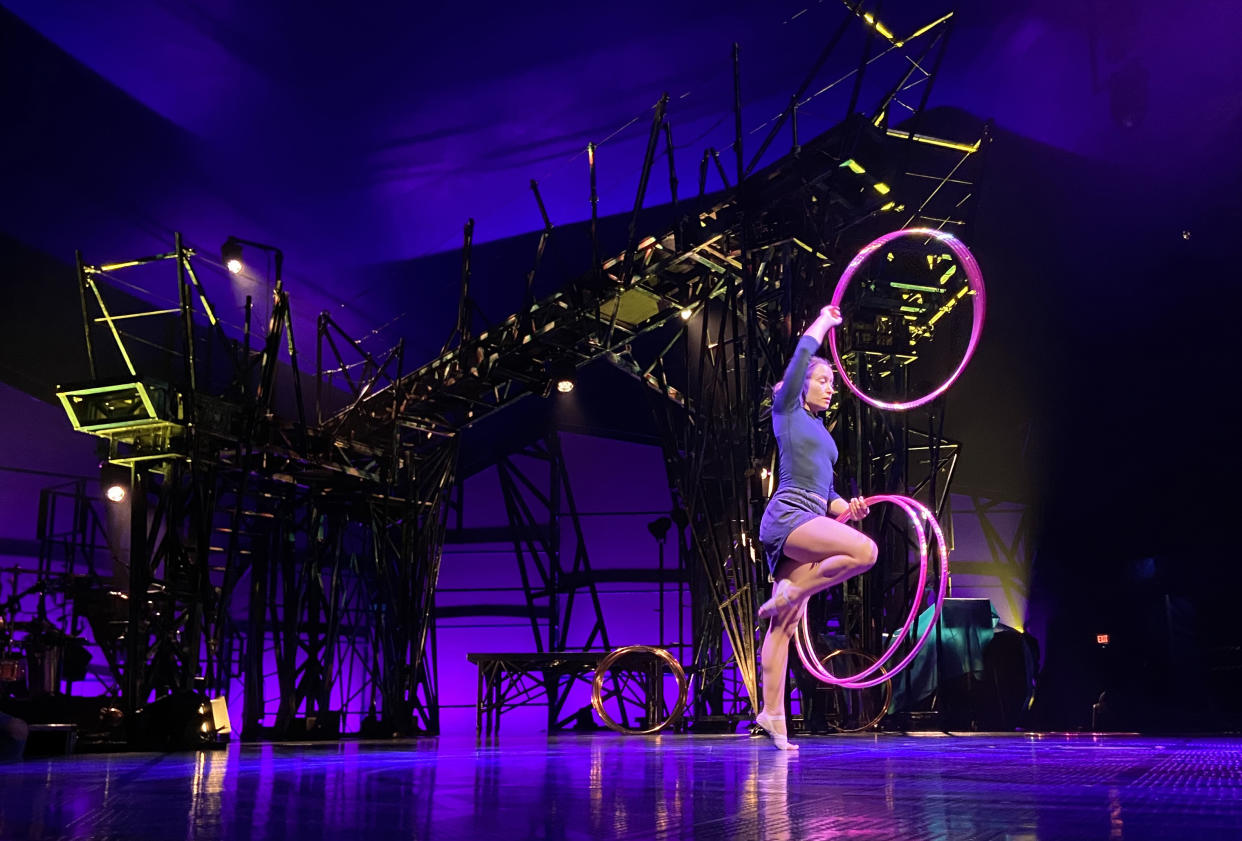Behind the scenes: Cirque du Soleil’s ‘Bazzar’ brings artistry, acrobatics and a lot of shoes to a big top at MOA

Within nine days, a parking lot just north of the Mall of America was transformed into a sprawling tent complex — the home, for the next month, of Cirque du Soleil’s show “Bazzar.”
The show, which runs May 18 to June 16 — though the official premiere is Thursday, May 23 — is the Canada-based circus troupe’s first Twin Cities big-top show in a decade or so.
“Bazzar,” which is inspired by the origins of Cirque du Soleil in the 1980s, debuted in 2018 in Mumbai as part of an effort to bring Cirque shows to new parts of the world, said Christine Achampong, a publicist who travels with the troupe. The original version of the show was scaled down for easier transport, but it was expanded and relaunched in 2022 under a full-size big top.
Still, “Bazzar” has a slightly smaller cast and more intimate feel than other Cirque shows, artistic director Johnny Kim said. It’s less about flashy tricks and more about acts that showcase artistry and storytelling, he said.
“Everyone brings their own character to it, their own natural personality,” Kim said. “I really love to pull out the individual within the artist, so there’s a new shade, a new color, a new brightness that comes to the table. … Everyone has a different way of interpreting what they want to say in their movement.”
Every time the show moves to a new city, the entire stage infrastructure has to be disassembled and rebuilt. Then begins the several-day process of “validations,” or safety checks, where technicians test each piece of equipment with weighted bags to simulate performers’ bodies. By the time that’s done, there’s only enough time for each performer to have about a 30- to 60-minute slot onstage to run through their act.
On a recent afternoon, Josefina Oriozabala, from Argentina, rehearsed an aerial act in which she’s suspended above the stage by a ring knotted into her hair. After she got a feel for any quirks in the set-up this time around, her time was up: Mélodie Lamoreux, a Canadian hula hooper, had the stage next.
This fast pace is not uncommon. Before the current production hit the road about a year and a half ago, all the performers and crew decamped to Cirque du Soleil headquarters in Montreal to rehearse, rehearse, sit for 3D body scans for custom-made costumes and rehearse some more. But when they’re on tour, the cast and crew frequently have to adjust on the fly.
Costume shop, shoe repair
Backstage, there’s a full costume repair shop, a makeshift physical therapy clinic and a mini shoe factory.
The performers wear through shoes at a stunning rate, Achampong said: about one to two pairs per month, per person — and each is custom-built and painted, so the on-staff shoemaker is always busy.
There’s also a sizable gym, a kitchen/dining tent and laundry facilities.
And if a performer gets injured or needs to fill in for another act, the whole show shifts a bit: There are 178 slightly different versions of “Bazzar” that each account for different scenarios, Achampong said, and sometimes the cast has to quickly huddle up and pivot to a different version mid-show while a clown act keeps the audience none the wiser.
The Twin Cities is the last U.S. stop for “Bazzar.” A slate of Europe shows are up next, though the cast gets a two-month break first while their equipment crosses the Atlantic in several dozen shipping containers.
“Bazzar” showtimes are 7:30 p.m. Wednesdays, Thursdays and Fridays; 12:00, 3:30 and 7 p.m. most Saturdays; and 1 and 4:30 p.m. Sundays. Tickets range from $37 to about $150, with discounted multi-ticket bundles for families available.
Tickets can be purchased online at cirquedusoleil.com/bazzar.
Cirque du Soleil’s Bazzar by the numbers
2,600: Seats under the Big Top, individually installed
100: Traveling crew members including coaches, stage technicians, sound engineers, accountants, a plumber, two physical therapists, three costume-makers, four chefs, three musicians and one singer
85: Local workers, mostly construction workers but also a masseuse, acupuncturist and barber
71: Semitrailers to transport the entire show — minus the people — from city to city
45–150: Minutes for each performer to create their own makeup look before each show
35: Performing artists in the show
25: Countries represented among the performing artist cast
18: Languages spoken on tour, though English and French are the most common
15–18: Loads of laundry on Saturdays, the troupe’s busiest day of the week
9: Days to transform an empty parking lot to a performance-ready Big Top
3: Fire-safety technicians, dressed in all black, who crouch alongside the stage for the duration of every show in case of emergency
1: Hotel the entire cast and crew stay in for the entire time they’re in a city (though some members find alternate lodging)
Related Articles
Theater | Memorial Day 2024 ceremonies and events in the Twin Cities this weekend
Theater | Pioneer Press 2024 patio guide has something for everyone
Theater | St. Paul City Council, mayor’s office still wrangling with special event costs
Theater | Hudson bicyclist injured in hit-and-run plans dance party for June 4
Theater | Don’t have tickets to Game 2 of the Western Conference Finals? Timberwolves hosting a block party outside the arena

